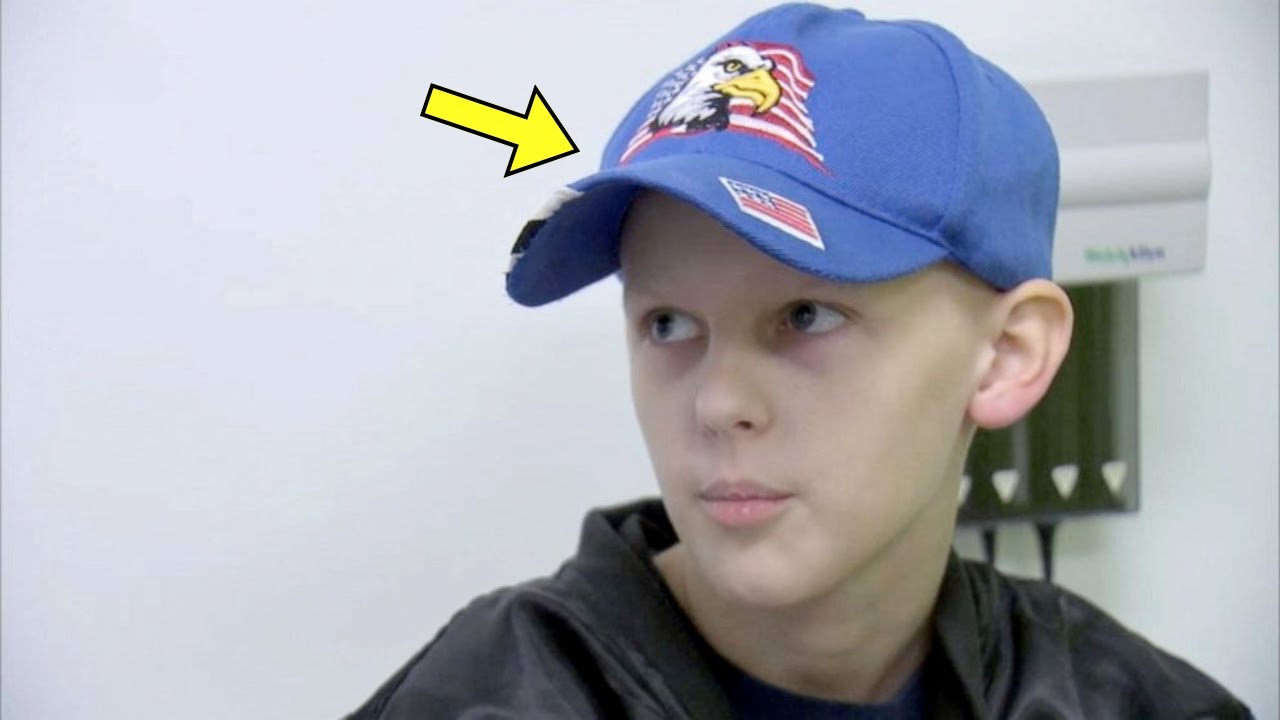In a small classroom, tension filled the air. Maddie sat nervously, her cap pulled tightly over her head. The teacher, Mr. Hudson, was relentless. He banged his fist on the desk, pointing at her with a burning gaze, demanding, “Take it off now.”
Maddie’s heart raced. The cap was her shield, hiding a truth she wasn’t ready to share. But Mr. Hudson didn’t care about her reasons. His eyes were fixed on her, moving closer, his patience running thin.
As fear bubbled in her stomach, Maddie pleaded silently, hoping her teacher would hear her unspoken cries. She had been through so much already—a chronic illness that ravaged her bones, a treatment that caused her hair to fall out in patches, and a life turned upside down at the age of eleven.
Everything had started at a birthday party. Maddie was young, healthy, and carefree until a sudden, sharp pain struck her chest. The pain grew unbearable, spreading through her body. She collapsed, and when she woke up, she was in a hospital bed, staring at the bright lights overhead.
The diagnosis was a rare disorder, chronic recurrent multifocal osteomyelitis, which inflamed her bones and brought constant pain. Her life changed overnight. Hospital visits became routine, and treatment, though helping, brought an unexpected side effect: her hair began to fall out.
Maddie’s mother, always by her side, suggested getting a wig. It was a small glimmer of hope amidst the darkness, and with the help of a charity, Maddie found a wig that helped her regain some confidence. But even with the wig, the battle was far from over.
One day, Maddie’s cap had become too loose, and her mother was worried. She urged Maddie to stay home, but Maddie refused. She loved school and her friends, and she didn’t want to miss out, even if it meant wearing a baseball cap instead of her wig.
However, that cap would lead to her worst nightmare.
In school, some boys teased her relentlessly, trying to pull off her cap. With the help of her friends, Maddie managed to fend them off, but the ordeal wasn’t over. When she entered Mr. Hudson’s classroom, the teacher noticed her cap immediately.
“No caps in class,” he demanded. Maddie knew she had permission to wear it because of her illness, but Mr. Hudson wouldn’t listen. He reached for her cap, yanking it off before she could explain. The room filled with gasps as her bare head, with patches of hair missing, was revealed to everyone.
Maddie’s world collapsed. Her classmates stared, some giggling, others looking at her with pity. She felt exposed, humiliated, and utterly broken.
She fainted from the overwhelming pain, both physical and emotional, and woke up in the hospital again. Her father, a Navy SEAL, was there this time, watching over her with a fierce protective gaze. He was furious, and his anger drove him straight to the school.
Eric Dunham stormed into the building, demanding to speak to Mr. Hudson. His anger was palpable, but even in his rage, he knew violence wasn’t the answer. Instead, he and Maddie’s mother took legal action, determined to hold the school accountable for the trauma their daughter had endured.
The incident spread beyond the school, sparking public outrage. The community rallied behind Maddie, demanding justice for her and other students with chronic illnesses. Legal battles followed, and the school was forced to confront its negligence in handling Maddie’s condition.
In the end, Maddie became a symbol of resilience, her story igniting a movement for better protection of students with medical conditions. The school was held accountable, and new policies were implemented to ensure that no child would have to face what Maddie had.
Though scarred by the experience, Maddie’s story turned tragedy into a force for positive change, inspiring others to stand up for vulnerable students across the country.





